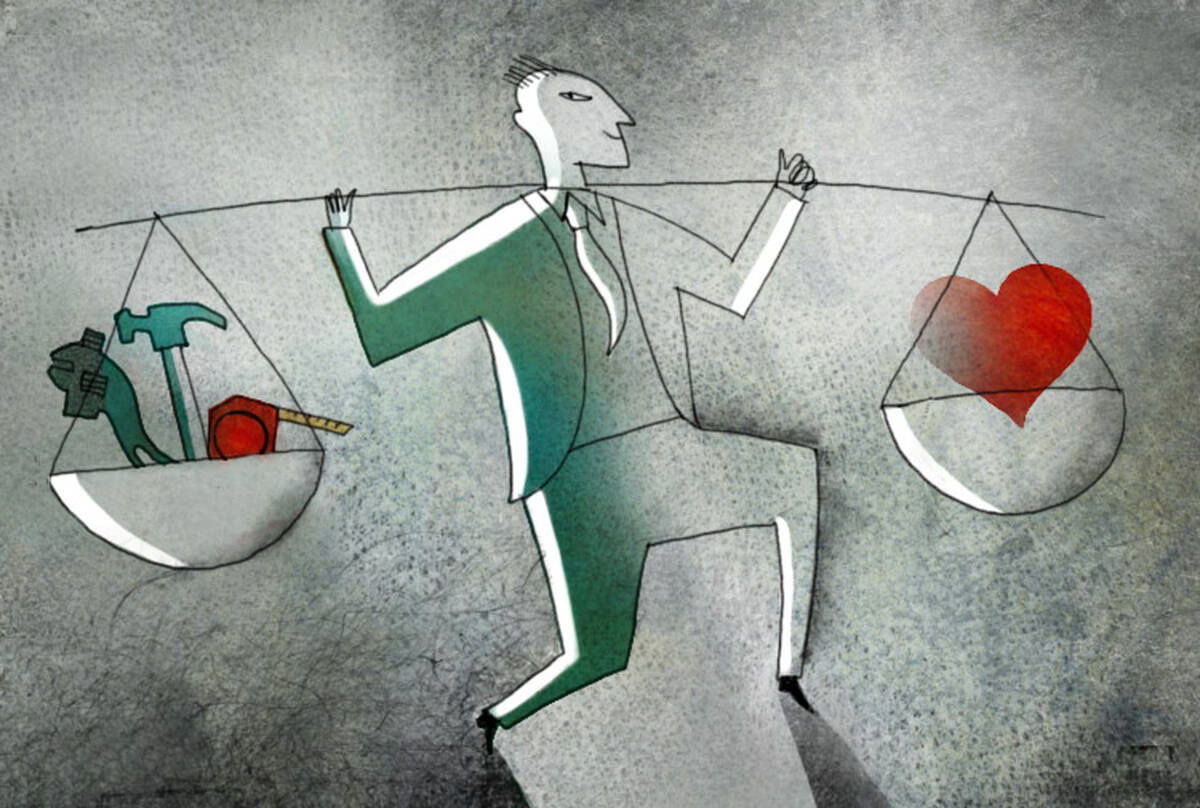Featured Faculty
Sandy & Morton Goldman Professor of Entrepreneurial Studies in Marketing; Professor of Marketing; Co-chair of Faculty Research
This audio is powered by Spokn.

Yevgenia Nayberg
Persuasion is a fundamental component of communication, whether between brands and consumers, within organizations, or in everyday discussions.
So how can you be more persuasive?
One important factor can be whether to stress competence or warmth in a message. For marketers, this translates to deciding whether to communicate or advertise aspects of your firm’s expertise and efficiency or your firm’s sincerity and approachability.
But, when should you stress competence versus warmth? The answer can sometimes depend on the feeling of power experienced by both the communicator and the audience, according to research by Derek Rucker, a professor of marketing at the Kellogg School.
“The relationship between audience and communicator power is dynamic. Our research stressed the importance of knowing both pieces of the puzzle.”
Rucker and his colleagues found that audiences who felt powerful were more swayed by pitches that focused on competence and skillfulness, whereas those who felt powerless were more persuaded by pitches that emphasized warmth and sincerity. This research challenges a long-discussed assumption that powerful people always hold sway and powerless people are always easier to bend.
Learn more about Kellogg’s executive education program on strategic marketing communications in the digital age here.
Rucker and his coauthors—David Dubois of INSEAD and Adam Galinsky of Columbia University—explored the relationship between power and persuasion in four experiments. The experiments rely on techniques to temporarily affect how powerful participants feel in the moment. In one experiment, for instance, participants were asked to write sentences using either powerful words (like “authority” and “dominates”) or powerless ones (like “obey” and “submits”). In another, participants were told to recall an instance in which they felt either powerful or powerless.
After being placed into a state of low or high power, participants were assigned to be either communicators or audience members. Communicators were tasked with persuading the audience to, for example, use a new gym facility or dine at a specific restaurant. In multiple experiments, the researchers had either “high-power communicators” or “low-power communicators” deliver messages to “high-power audiences” or “low-power audiences.”
Across the experiments, the researchers observed two clear trends.
First, the power of the communicator influenced the type of arguments they used. High-power communicators gravitated toward more competence-related arguments, whereas low-power communicators used more warmth-related arguments.
Second, high-power audiences were more persuaded by messages from high-power communicators. And low-power audiences were more persuaded by messages from low-power communicators.
Why did this happen?
“When people feel powerful, they appear to care more about competence, and they deem that as important,” Rucker says. “So, high-power communicators use competence arguments more, and those arguments are more appealing to high-power audiences. Conversely, when people feel powerless they appear to care more about warmth, and so low-power communicators use warmth arguments more, and these arguments are more appealing to low-power audiences.”
In other words, when a communicator’s perspective aligns well with that of her audience, she is more likely to use arguments that matter to them. And, of course, the opposite is true when the power levels of the communicator and audience are not aligned.
For instance, “a person in a high-power mindset might talk about the competence of a charity to a person in a low-power mindsest. The high-power mindset might lead the communicator to emphasize competence,” Rucker says. “But the person in the low-power mindset might think, ‘They might be competent to carry out their mission, but can they be trusted?’ And the reverse is true. A person in a low-power mindset might say, ‘This restaurant is so friendly and inviting.’ But a person in a high-power mindset might think, ‘That’s fine, but I’m interested in the quality of the food.’”
So a mismatch in the mindsets of a communicator and an audience can create an unitended disconnect between them, making it harder for the communicator to be persuassive.
The research suggests that tailoring a message to the mindset of an audience can increase its impact.
Since feelings of power, as opposed to actual social position, are often in flux, paying attention to the context around the message’s delivery might be crucial. An appeal that normally would be perfect for a given audience might fall flat if the audience’s feeling of power has been altered by societal or personal events, such as a CEO who was recently fired.
The research also suggests the importance of choosing the right person to craft the message—because powerful messengers might be inclined to frame an argument in a way that is suitable for powerful audiences, but not for low-power audiences.
“The relationship between audience and communicator power is dynamic,” Rucker says. “Our research stressed the importance of knowing both pieces of the puzzle.”
But Rucker is not ready to conclude that matching is always effective and mismatching always ineffective. It is a question he hopes to research more in the future.
“I’m a contextualist, so I’m very open-minded to the idea that mismatches might sometimes be beneficial,” he says. “Maybe there are cases where having a mismatch is good, for example, when a mismatch causes people to pay attention to information they would have otherwised ignored. I look forward to exploring this issue in greater depth.”
Dubois, David, Derek D. Rucker, and Adam D. Galinsky. 2016. “Dynamics of Communicator and Audience Power: The Persusiveness of Competence Versus Warmth.” Journal of Consumer Research.